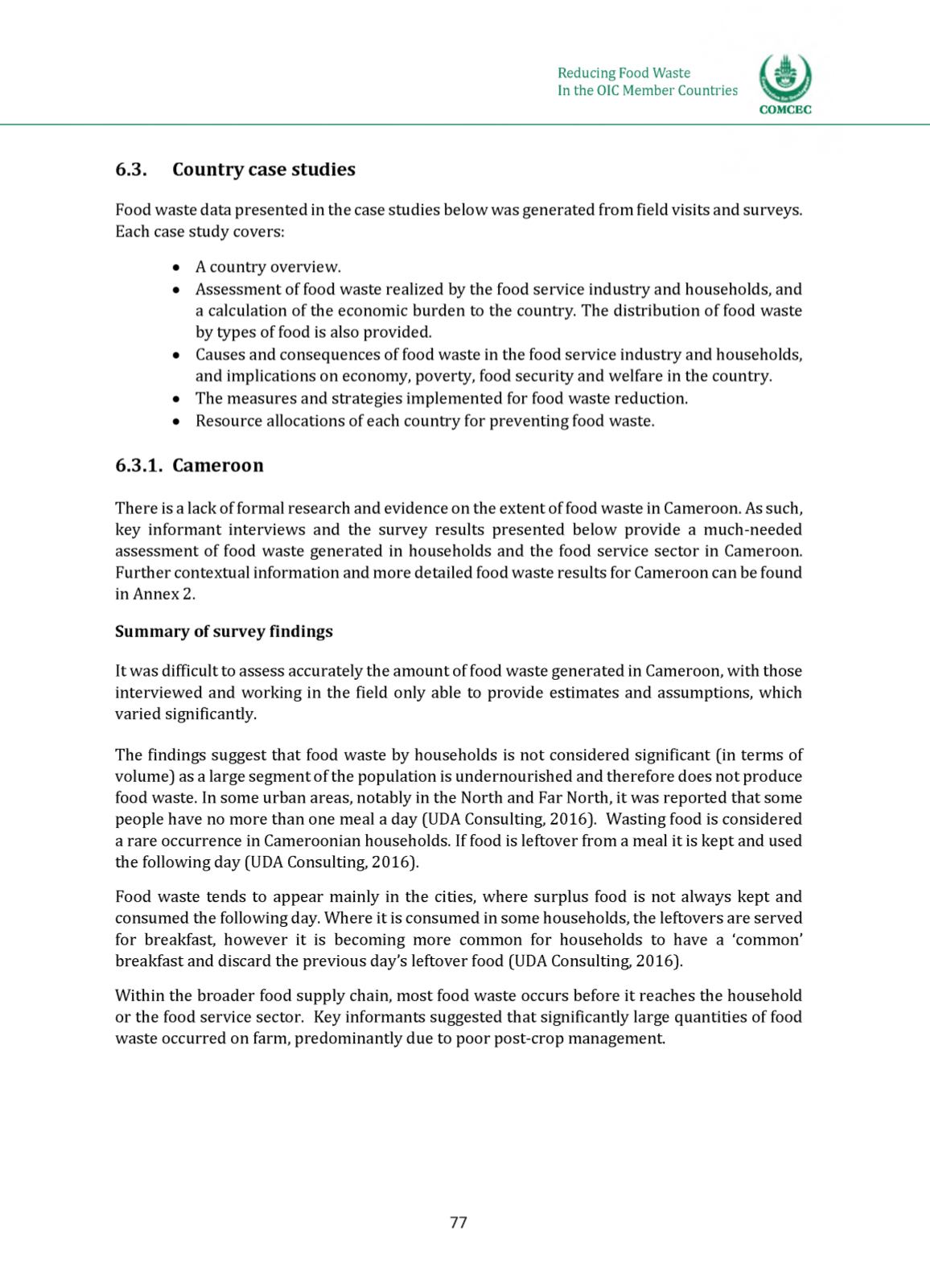

COMCEC
Reducing Food Waste
In the OIC Member Countries
6.3. C o u n try case s tu d ie s
Food waste data presented in the case studies below was generated from field visits and surveys.
Each case study covers:
• A country overview.
• Assessment of food waste realized by the food service industry and households, and
a calculation of the economic burden to the country. The distribution of food waste
by types of food is also provided.
• Causes and consequences of food waste in the food service industry and households,
and implications on economy, poverty, food security and welfare in the country.
• The measures and strategies implemented for food waste reduction.
• Resource allocations of each country for preventing food waste.
6 .3.1. C am e ro o n
There is a lack of formal research and evidence on the extent of food waste in Cameroon. As such,
key informant interviews and the survey results presented below provide a much-needed
assessment of food waste generated in households and the food service sector in Cameroon.
Further contextual information and more detailed food waste results for Cameroon can be found
in Annex 2.
Summary of survey findings
It was difficult to assess accurately the amount of food waste generated in Cameroon, with those
interviewed and working in the field only able to provide estimates and assumptions, which
varied significantly.
The findings suggest that food waste by households is not considered significant (in terms of
volume) as a large segment of the population is undernourished and therefore does not produce
food waste. In some urban areas, notably in the North and Far North, it was reported that some
people have no more than one meal a day (UDA Consulting, 2016). Wasting food is considered
a rare occurrence in Cameroonian households. If food is leftover from a meal it is kept and used
the following day (UDA Consulting, 2016).
Food waste tends to appear mainly in the cities, where surplus food is not always kept and
consumed the following day. Where it is consumed in some households, the leftovers are served
for breakfast, however it is becoming more common for households to have a ‘common’
breakfast and discard the previous day’s leftover food (UDA Consulting, 2016).
Within the broader food supply chain, most food waste occurs before it reaches the household
or the food service sector. Key informants suggested that significantly large quantities of food
waste occurred on farm, predominantly due to poor post-crop management.
77
















